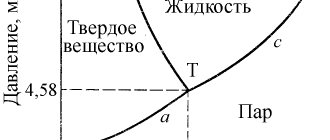Each of us, at least once in our lives, found ourselves in the company of interesting personalities who, during a conversation, used some very smart, but not always understandable words and phrases. “Cognitive dissonance” precisely belongs to the category of those concepts that many people often use, but do not always understand what exactly their meaning is.
At school we all studied Krylov's fables. One of the fables, in which we are talking about a gossamer fox and grapes, demonstrates to us in the best possible way what cognitive dissonance really is. The sly fox, seeing a juicy bunch of grapes in the garden, wanted to eat the delicious berries. But no matter how she tried to get to the grapes, she never succeeded.
In despair, the fox said to herself with annoyance that although the grapes looked good, she didn’t see a single ripe berry, so she didn’t really want to eat them, because it could immediately set the teeth on edge. Lisa experienced first-hand the cognitive dissonance that arose when she was unable to satisfy her desire.
What is cognitive dissonance in simple words? When and why did the theory of cognitive dissonance emerge? What is the essence of this concept? What state is a person experiencing cognitive dissonance in? How does our consciousness fight this unpleasant state? In this article we will look at these and other questions regarding cognitive dissonance and its impact on our daily lives!
What is "cognitive dissonance"?
Such a psychological phenomenon as cognitive dissonance represents disagreements in a person between his principles and actions. Often people have to do contradictory actions that are at odds with the foundations of society or personal principles because of which, and cognitive dissonance arises. Simply put, it is conscience or a sense of discord. In this state, people often begin to convince themselves and others that their actions were necessary and correct.
Cognitive dissonance forces you to look in your head for ways that can justify certain actions and thereby calm your emotional background. Sometimes, in order to convince themselves, they direct their thoughts in a new direction and look at the action from an angle that corresponds to the principles of society. In such moments, a person most often simply deceives himself and dulls cognitive dissonance.
The meaning of "cognitive dissonance" in simple words
Many terms and phenomena that are used in the psychological field can be confusing, although in fact they are quite simple. Cognitive dissonance falls right into such a list of definitions that require clarification.
Any person living on planet Earth has his own foundations, principles, norms and rules of behavior in society, at home and even alone. Everyone has their own laws of life. What is good for one person will be a crime for another, but in any case, all people constantly find themselves in situations where they have to step over their principles . It is at such moments that an unpleasant feeling appears, which is called cognitive dissonance.
People are capable of breaking their own rules of life not only consciously. There are times when a decision or action is made by others and cognitive dissonance still appears. More precisely, thoughts appear that would justify actions in front of one’s own foundations and society. It is not always possible to find the necessary words. Feelings of guilt can ultimately lead to neurosis or depression. This condition most often occurs in people who commit unintentional crimes.
Another situation where cognitive dissonance can manifest itself is when making a decision. Even in cases where the decision has already been finally made, thoughts related to possible options still hover in your head. This may mainly be due to doubts or a large number of decision options.
Resonance is...
The concept of resonance was first introduced in the 16th century by Galilio Galei, when he was studying the work of pendulums and musical strings.
Translated from Latin, the word “resonance” literally means “ I respond ” and is a physical phenomenon in which one’s own oscillatory movements become forced and increase their amplitude, thus responding to environmental influences.
In simple words, resonance is a response to a certain stimulus from the outside. This is the synchronization of oscillation frequencies (the number of oscillations per second) of a certain system and the external force acting on it, which entails an increase in the amplitude of oscillations of this system.
Resonance can be described as follows:
- imagine a certain physical body that is either in a state of absolute rest or makes amplitude movements of a certain frequency;
- this body suddenly begins to be influenced by a certain external force that has its own amplitude and frequency;
- if the frequencies of the body and the external force coincide, then the amplitude of the body will begin to increase.
For example , everyone knows how a swing “works”. First, you make a sharp push with your feet from the ground, and the swing begins to move back and forth. If you do not interfere with this process, then after a while they will stop.
But if, while sitting on them, you adapt to their movement with your whole body (neither faster nor slower), then the amplitude of the movements of the swing will begin to increase on its own. In this case, you, or rather your movements, are an external influence, a compelling force, with the help of which the swing soars higher.
Even the smallest external influence can increase the amplitude of movements of a certain system many times over when their frequencies coincide. From the example of a swing: a small child can swing an adult even with a very large weight if he adapts to the movement of the swing.
To better understand what resonance is, let's look at its antonym. It is the word “ dissonance ” (from the Latin “discordant”), which means discrepancy, discrepancy.
Let’s take a swing again as an example: if you start jerking it sharply and chaotically back and forth, the smooth, swinging vibrations will soon disappear and the swing will stop. Another simple example: if you go outside in a fur coat in the summer, it will be dissonant, since the weather does not match your outfit.
Why does cognitive dissonance occur?
There is nothing dangerous to health about the phenomenon of cognitive dissonance, but it can still cause psychological discomfort for some time. In order to control your thoughts and emotions, you first need to understand why cognitive dissonance occurs.
The most common reasons include:
- disagreements between ideas and concepts when making a certain decision;
- discrepancy between decisions and life rules;
- the spirit of contradiction that appears when cultural, ethical, religious or legal norms are violated;
- new information or discrepancy between information received in certain situations.
Hypotheses of the theory
L. Festinger's theory of cognitive dissonance is based on two main hypotheses, which are as follows:
- due to the fact that the occurrence of cognitive dissonance is accompanied by psychological discomfort, the individual will try in every possible way to overcome this discrepancy;
- from the first point we can derive the second, which states that a person will in every possible way avoid situations that could plunge him into such a state.
Festinger's theory of cognitive dissonance not only provides an interpretation and clarification of concepts, but also explains ways out of this state. In addition, the scientist considers a number of real cases, which are the most typical examples in psychology.
Author of the theory of cognitive dissonance
The concept of cognitive dissonance and its definition appeared relatively recently. Its developer is Leon Festinger , who in 1957 began to study the essence, causes and patterns of this phenomenon. At the beginning of research, this condition was attributed only to individuals who perceive a discrepancy between personal norms and decisions. Subsequent studies of cognitive dissonance showed that such a rule can even affect an entire team.
Hypotheses of the theory
The theory of cognitive dissonance, which was developed by L. Festinger, is based on two hypotheses .
- Because the disagreement between action and principles causes contradiction and discomfort, the individual will try in every possible way to correct the situation and justify his decision.
- Following from the first hypothesis, the second. It says that people in every possible way avoid situations where they have to make decisions that go against personal norms and rules.
L. Festinger not only defined the concept of a cognitive state, but also developed techniques that allow you to suppress this phenomenon in yourself. In addition, he reviewed and even classified a number of cases that most often awaken a cognitive state in human psychology.
The essence of cognitive dissonance
The first thing to pay attention to when considering cognitive dissonance is its motivational effect. More precisely, such a state is often decisive in the behavior of an individual. It is certain ideas and beliefs that often influence a person’s decision-making, and also determine his life positions and values. Thus, it cannot be said that a cognitive state is an ordinary life phenomenon that can be explained by a few facts. These are, first of all, motivational factors that in everyday life or non-standard situations cause cognitive dissonance and psychological discomfort.
The concept of cognitive state combines:
- intelligence;
- the heat of passion.
Intelligence is all the experience gained throughout life, personal principles and ethical standards that a person applies when choosing a certain decision. At some point, a state of passion may occur, or more precisely, a situation with stimuli, which actually erases the internal contradiction and makes a person forget about his personal principles. This is exactly the situation that is called cognitive dissonance.
The phenomenon of cognitive dissonance is inextricably linked only with past events . More precisely, unpleasant sensations, disintegration, remorse and a justificatory effect occur only after committing an action that goes against the principles of life. It is after this that the individual begins to look for ways and options that will help him accept his choice, calm down and get rid of psychological discomfort.
Meaning of the concept
Cognitive dissonance is a psychological phenomenon that involves the occurrence of some inconsistency between two cognitions. Thus, often in his actions a person has to either neglect social guidelines or sacrifice personal principles. Because of this, a certain disagreement arises between action and belief.
As a result of the onset of cognitive dissonance, a person may resort to justifying his own actions or misconceptions that run counter to generally accepted norms. Otherwise, the individual has to direct his thinking in a new direction, which would correspond to the opinions of others and reduce contradictory feelings.
How to get rid of a cognitive condition?
Cognitive dissonance causes psychological discomfort, which can be of very different levels. In some cases, these may be ordinary thoughts that last no more than a day or serious remorse, in which a person can become very fixated and lead himself to a state of breakdown. There are several ways that can reduce or completely eliminate the uncomfortable condition .
- In order to change or remove the unpleasant feelings associated with making a wrong decision, you should change your line of behavior if possible.
- Trying to convince yourself is also an effective way to drown out your own conscience. You need to force yourself to believe that the decision made is correct, but in some cases this can even be dangerous, since the boundaries of ethics and morality are blurred.
- Filtering information can help avoid cognitive states. To do this, you need to avoid negative information or try not to take it seriously.
- Accept everything that happened and try to just come to terms with the situation. If your conscience still torments you, then a simple change in behavior and movement towards familiar personal principles will help.
Conclusion
Many scientists and psychologists have studied the issue of cognitive dissonance. It is especially worth paying attention to the works of Leon Festinger, as well as Sigmund Freud and his followers. Their theories are the most complete and contain not only information about the phenomenon itself and its causes, but also about ways to solve the problem.
It is worth noting that the theory that describes the phenomenon of cognitive dissonance relates to motivational ones. The contradiction that arises as a result of the discrepancy between beliefs and desires and real actions largely influences what the individual’s behavior will be in the future. He can come to terms with the situation and try to reconsider his ideas, which will somewhat reduce the state of dissonance, or he can resort to attempts to explain or justify his behavior, avoiding real data and facts (protecting himself from the outside world).
To avoid a state of cognitive dissonance, you should avoid contradictory states and information that contradicts your beliefs. In this way, you can protect yourself from internal contradictions that arise from the need to act contrary to your desires and beliefs.
How to avoid dissonance
Because cognitive dissonance is primarily accompanied by discomfort and psychological stress , it is best not to get rid of it, but to completely avoid this condition. One of the most effective ways is related to filtering negative information. It won’t be possible to completely abstract yourself from the negative, so you should learn not to take everything to heart. This method has long been studied and is part of the concept of psychological protection. It was developed by the famous Sigmund Freud and subsequently developed by his followers.
Naturally, there are times when it is simply impossible to avoid cognitive dissonance. In such cases, further development and worsening of this phenomenon should be avoided. To do this, a person must introduce into his life thoughts or actions that will help show the negative in a favorable and positive light. At the same time, it is important to completely isolate yourself from other negative sources of information that can return an uncomfortable state.
One of the most common ways to get rid of a state of dissonance is to adapt to an unpleasant situation or learn not to perceive an unpleasant reality. The situation is acceptable, and these are exactly the words that you need to constantly repeat in your head. Only in this case can you quickly get rid of the cognitive effect and avoid discomfort or depression.
Types and examples of resonance
The phenomenon of resonance rightfully belongs to physics, since it was discovered by it and initially described only physical phenomena.
However, today this concept is used in a variety of spheres of life.
In this regard, we can distinguish its different types:
- Mechanical - the above-mentioned swing, the swinging of the bell “tongue”, the resonance of the bridge from a passing train or soldiers walking along it “in step”, etc.
- Acoustic – an example is the sound resonance used in playing musical instruments, such as guitar, balalaika, lute.
They all have a body and it was invented for a reason: the sound that the string makes when it is plucked goes inside the body. There it resonates with the walls, which leads to its amplification. Therefore, the sound quality directly depends on the quality of the material from which the instrument is made and even on the varnish with which it was coated. - Electrical – the coincidence of the frequency of the external voltage with the natural frequency of the electrical circuit through which the current flows.
- Public – a vivid response of the public to an event, phenomenon or situation. We are talking about a reaction that turned out to be similar among the majority of people. For example, the pension reform of 2021 caused a loud, sharp, negative resonance among the citizens of our country.
- Cognitive resonance is a coincidence of views and opinions.
For example, you met someone: as a result, you have a positive impression of the person. Why is this so? The whole point is that during the conversation you found a lot in common with him, his values and judgments turned out to be close to you, hence the sympathy, which is a consequence of resonance. From a philosophical point of view, the phenomenon is defined as the unanimity of two souls in a sensory context.
Mobile phones, microwave ovens, televisions, echoes in the mountains, sonorous singing in the bathroom - the phenomenon in question is present everywhere.
Examples from life
In real life, cognitive dissonance occurs not only often, but almost every day. It could be a simple little thing or a life-changing decision. Numerous examples only prove this.
The famous story with a medalist and a C student is perfect as an example of cognitive dissonance. In this story, a medalist comes to university and naturally, the teachers expect high achievements from him, while they don’t pay attention to the C student, but what if their roles are reversed? If a medalist gives a bad answer on the exam, and a C student, on the contrary, tells everything correctly and factually, the teacher will experience cognitive dissonance. More precisely, his ideas and expectations will not be met .
Another example involves a beggar on the street who asks for money. On the one hand, it is worth helping, but, on the other hand, his appearance does not inspire confidence. In such a situation, people are often lost and do not know how to act in this situation.









